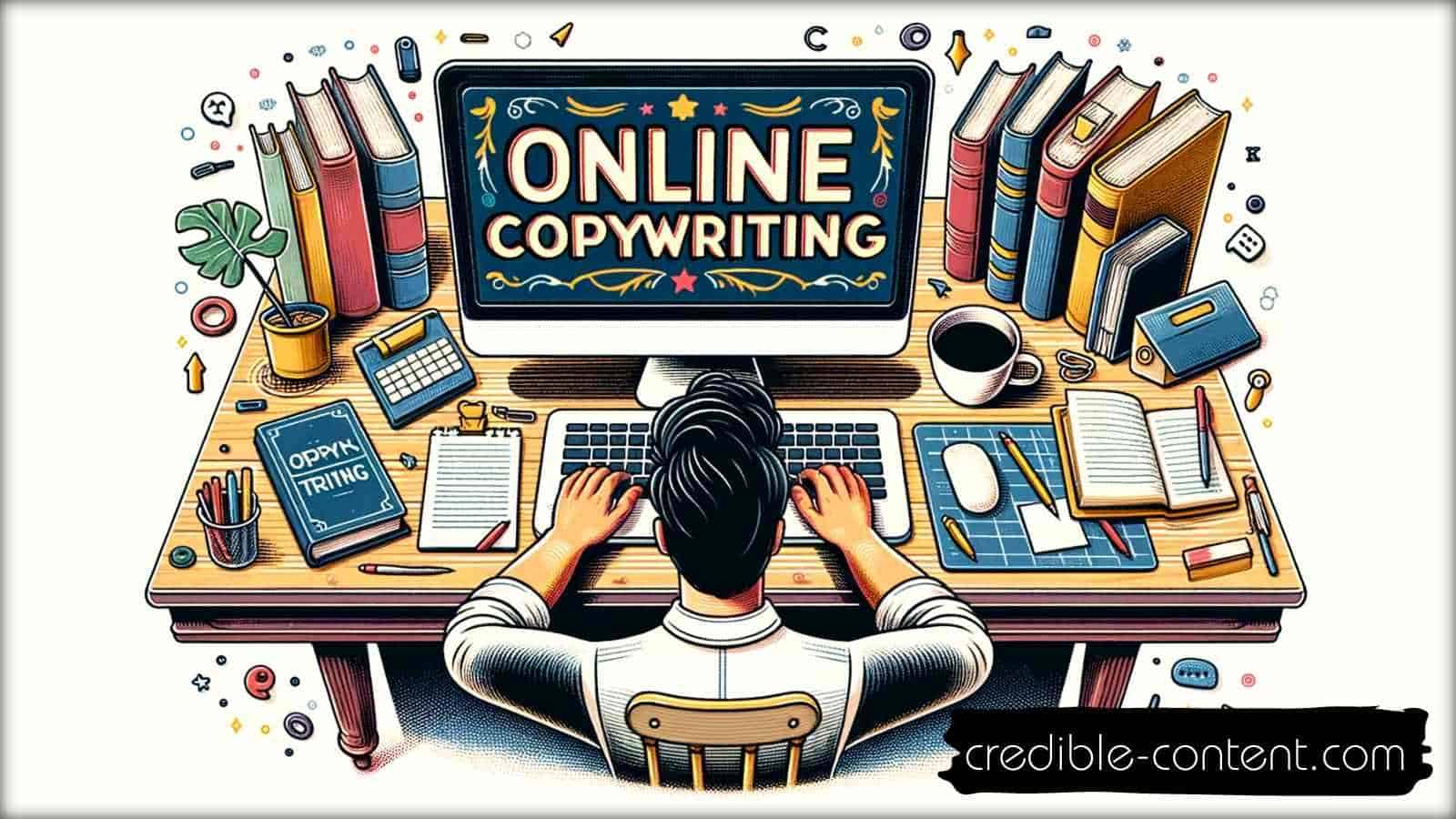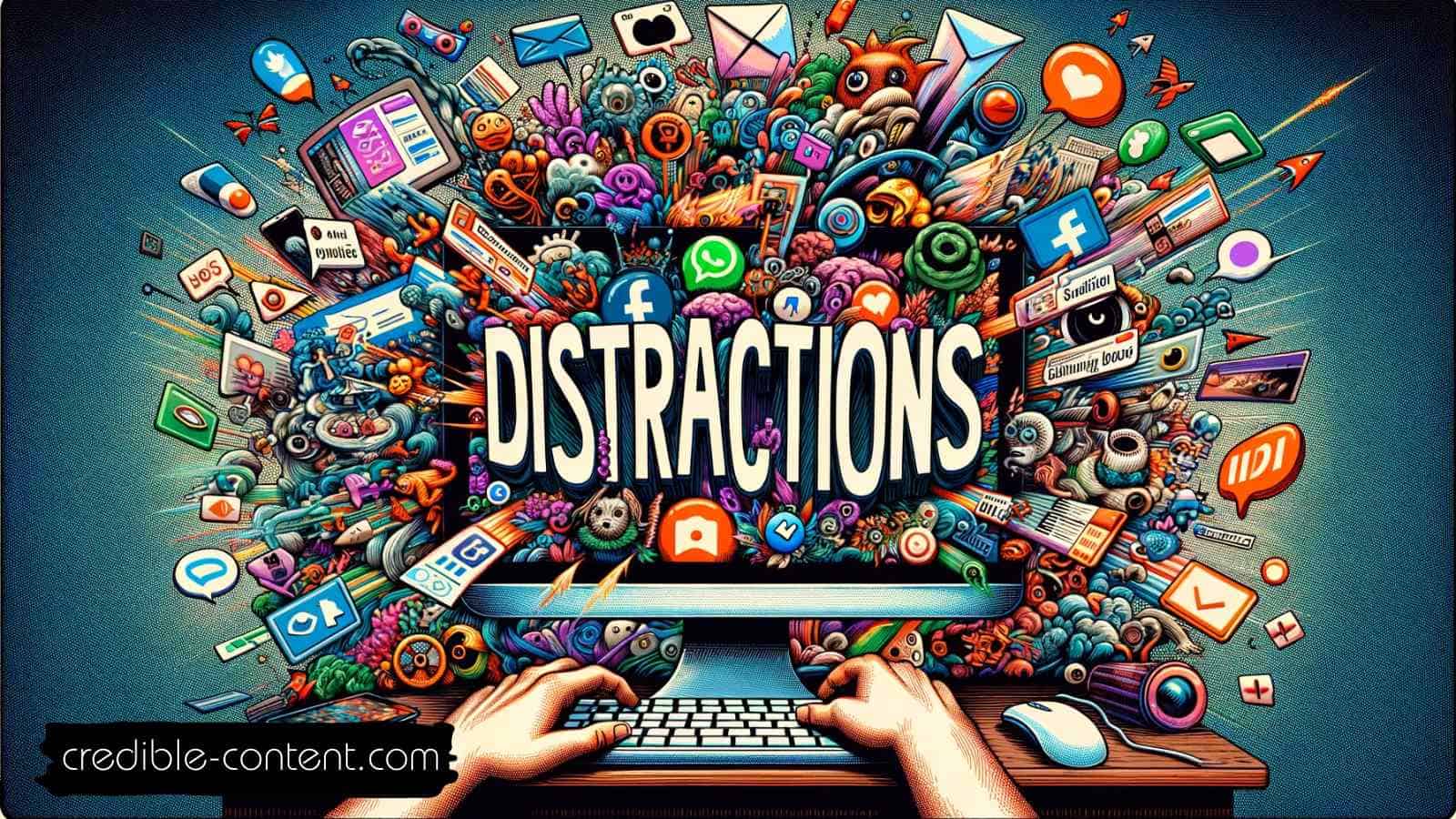
The importance of online and web copywriting should never be underestimated whether you are writing copy for a sales page or a simple blog post.
Table of contents
- Is online and web copywriting different from normal copywriting, or even content writing?
- Outstanding differences between web copywriting and traditional copywriting
- Some pitfalls to avoid when writing copy for the Internet
- Why hire me for your online and web copywriting needs
Whenever you write something for your website or for your blog, you are communicating an idea.
Here I’m talking about spending serious time establishing your business online. I’m not talking about setting up a journal to share your morning rituals and your cat’s culinary habits.
When you communicate something, you want to convince people into taking an appropriate action.
Your website or your blog may have many entry points (it’s not necessary that everyone comes to your website via your homepage).
Your various links appear on search engine results, on other websites and blogs and also on social networking timelines. Once you have published an article, a webpage or a blog post, it is not in your hand who publishes the link, and where.
Most of the people who come to your website will be coming from these links.
So every page on your website is important, and hence, the importance of online and web copywriting.
Is online and web copywriting different from normal copywriting, or even content writing?
Have you ever come across a phrase like, “He was able to sell his idea in the board meeting”?
So when you are “selling” your idea it doesn’t mean that you are actually selling something. It means you are able to convince people. You make them agree with you. This is also selling.
Every webpage on your business website should be selling your central idea.
For instance, if I’m looking for content writing clients, every page of mine on this website should lead visitors to that direction.
So when you’re writing for your page, when you’re creating content for your website and for your blog, copywriting plays an important part.
Online and web copywriting isn’t different from conventional copywriting per se, but there is definitely some difference.
When people come to your website, they might already be in a great state of distraction. It is so easy to go to another website in just a flick of a second.
It doesn’t even have to be a voluntary, conscious effort. Just imagine, a prospective client is going through your pages, and suddenly there is a pop-up on his screen that tells them that he has got a new mail, or someone is trying to contact him on chat.
My Skype is always on and sometimes when I’m buried deep into writing something or reading some useful material on the web, I get a request for a new contact, or a client asks me a question.
These days the same happens with Google hangout as you can install it as a Chrome add-on. Of course you can switch off these distractions, but many people don’t and they can be easily distracted.
Writing copy for them can be a bit tricky.
So when a person comes to your website your copywriting should immediately capture her attention.
Use as few words as possible and make your message as convincing as possible. Provide direct solutions and answers.
Don’t beat around the bush or waste words unless there is a real reason (for instance, this particular webpage is quite long but I know you are interested in reading it).
There should be lots of action words to keep the person engaged.
Unlike other online copywriters, I don’t recommend creating a false sense of urgency because your customers and clients should be fully aware of what they’re buying and when they are buying rather than you forcing them into something they don’t want to do.
Online copywriting for a web full of distractions

- Start with a Hook: Your first sentence should be compelling enough to make readers want to continue. Think of an interesting fact, a startling statement, or a question that piques curiosity.
- Use Simple Words: Avoid jargon and complex language. Simple words ensure your message is accessible to a wider audience. Web copywriting.
- Short Sentences: Long, complex sentences can lose readers. Short sentences keep the pace brisk and maintain attention.
- Bullet Points: They’re great for summarizing benefits or features. Bullet points make information easy to scan and digest.
- Use Numbers: Numbers stand out in a text. They can represent stats, benefits, or steps in a process, adding structure and credibility.
- Ask Questions: Questions engage the reader’s mind, prompting them to think about how the content relates to them. Online and web copywriting.
- Tell Stories: Stories create emotional connections. They can be case studies, personal experiences, or hypothetical scenarios that illustrate your point.
- Be Specific: Vague statements don’t convince. Specifics, like exact numbers or real-life examples, add authenticity.
- Use Humor: Humor, used appropriately, can make your copy memorable and shareable, but it must be relevant and respectful.
- One Idea per Paragraph: Focus each paragraph on a single idea to keep your message clear and understandable.
- Use Images: Images can convey complex ideas quickly and break up text. They should be relevant and add value. Online copywriting.
- Bold Important Points: Emphasizing key phrases helps readers quickly see the most important parts of your message.
- Use Headlines: Headlines should be intriguing and clear, giving a hint of the content’s value without being overly sensational.
- Solve Problems: Address the reader’s pain points directly. Show how your product or service provides a solution. Web copywriting.
- Be Conversational: A friendly, conversational tone makes your copy more relatable and engaging. Avoid sounding too formal or robotic.
- Use Testimonials: Real stories from satisfied customers add social proof, building trust in your product or service.
- Create Urgency: Phrases like “limited time offer” or “while supplies last” encourage quick action by creating a sense of scarcity.
- Clear Call to Action: Be explicit about what you want the reader to do next, whether it’s to buy, sign up, or learn more. Online copywriting.
- Use Lists: Lists are an excellent way to organize information, making it more approachable and easier to remember.
- Address Objections: Identify common objections or doubts and address them directly and honestly in your copy.
- Be Empathetic: Show that you understand and care about the reader’s challenges or desires. This builds a connection.
- Personalize: Use words like “you” and “your” to speak directly to the reader, making your message more personal and relevant. Web copywriting.
- Use Contrasts: Before-and-after scenarios, for instance, can effectively highlight the impact of your solution.
- Stay Positive: A positive tone is encouraging and can help motivate the reader to take action.
- Keep It Relevant: Make sure your content is directly relevant to your audience’s interests and needs.
- Use Statistics: Incorporating relevant statistics can bolster your argument and add a level of authority to your copy. Online and web copywriting.
- Show Benefits: People care about how your product or service can improve their lives. Focus on benefits, not just features.
- Repeat Key Points: Repeating important ideas at different points can help cement them in the reader’s mind.
- Use Subheadings: Subheadings break up text into manageable sections and help guide readers through your content.
- Stay Updated: Use current references and data to show that your content is fresh and relevant.
- Be Authentic: Genuine writing fosters trust. Don’t exaggerate or mislead; be honest and transparent.
- Use Colors Wisely: Colors can influence mood and perception. Choose colors that complement your message and brand identity. Online copywriting.
- Interactive Elements: Elements like quizzes or surveys can increase engagement and make your content more interactive.
- Mobile-Friendly: With many people accessing content on mobile devices, ensure your copy is easy to read on smaller screens.
- Edit and Proofread: Always revise your work to eliminate errors. Well-edited copy is professional and more credible.
Outstanding differences between web copywriting and traditional copywriting

- Length: Web copy is typically shorter due to online readers’ shorter attention spans, while traditional copy can afford to be more detailed.
- Attention Span: Online readers skim content, necessitating more engaging and concise copywriting. Online and web copywriting.
- SEO: Web copywriting must consider search engine optimization for better online visibility, which is not a concern in traditional formats.
- Interaction: Web copy often includes interactive elements like clickable links and calls to action, unlike static traditional media.
- Format: Digital platforms allow for various formats (videos, blogs, social posts), whereas traditional copy is restricted to print formats. Online copywriting.
- Speed: Digital content can be published almost instantly, unlike traditional media which requires longer lead times for printing and distribution.
- Updates: Web content can be updated or corrected in real time; once traditional media is printed, it’s final.
- Visuals: Digital content integrates with other media like videos and images more seamlessly than print.
- Personalization: Online content can be tailored to individual users based on their browsing history, unlike one-size-fits-all traditional media. Web copywriting.
- Analytics: Digital platforms provide immediate data on reader engagement, something not as precisely measurable in traditional formats.
- Hyperlinks: Web copy includes links for additional information, interactivity, and SEO benefits.
- Accessibility: Digital content is more accessible to a global audience through the internet.
- Voice Search: With the rise of smart assistants, web copy now also needs to be optimized for voice search. Online copywriting.
- Scannability: Web content is formatted for easy scanning with headers, bullet points, and short paragraphs.
- Tone: Digital platforms often favor a more informal, conversational tone to engage readers.
- Direct Response: Web copy frequently includes immediate calls to action, such as “Buy Now” or “Subscribe Here.”
- Social Sharing: Digital content can be easily shared across social media platforms, increasing its reach. Web copywriting.
- Real-time Feedback: Online content allows for instant feedback from users through comments or shares.
- Cost: Traditional media often involves higher production and distribution costs compared to digital content.
- Distribution: Digital content benefits from broader and instant distribution across the globe.
- Headlines: In digital content, headlines are critical for SEO and to grab attention in a crowded online space.
- Audience Targeting: Digital platforms offer advanced targeting options based on demographics, interests, and behavior.
- Engagement Metrics: Online platforms provide metrics like engagement rate, clicks, and conversion tracking.
- Platforms: Web copywriters must adapt their style for different digital platforms, each with its own norms and audience expectations. Online copywriting.
- Mobile Optimization: With the prevalence of smartphones, web content must be optimized for mobile viewing.
- Interactive Elements: Digital content can include interactive elements like quizzes, polls, and interactive infographics.
- Scroll Depth: Web copywriters need to consider how much a user will scroll and place key information accordingly.
- User Experience: Web copy is part of the overall user experience on a website, impacting navigation and user satisfaction.
- Content Types: Digital platforms accommodate a diverse range of content types like blog posts, podcasts, and videos. Web copywriting.
- Narrative Style: Storytelling in web copy is used to engage users emotionally and keep them hooked.
- Fragmentation: Online audiences are more fragmented across various niches and platforms.
- E-commerce Integration: Web copy often directly links to e-commerce platforms for immediate purchasing options.
- Multilingual: Digital content is frequently translated to cater to a global audience. Online copywriting.
- User-Generated Content: Online platforms often incorporate user-generated content like reviews and comments into their copy.
- Sales Funnel: Digital content is crafted to cater to different stages of the online sales funnel, from awareness to conversion.
- Data-Driven: Decision-making in web copywriting is increasingly driven by data analysis and user behavior.
- Community Building: Online content can foster community engagement and discussion, extending the brand’s reach. Web copywriting.
- Brand Interaction: Digital platforms allow for direct and immediate interaction between brands and consumers.
- Virality: Web content has the potential for viral distribution, a phenomenon largely absent in traditional media.
- Evolving Trends: Digital copywriters must continuously adapt to the rapidly changing trends and algorithms of the online world.
Some pitfalls to avoid when writing copy for the Internet
Pitfalls to Avoid:
- Ignoring SEO: Failing to optimize for search engines means your content might not be found. Use relevant keywords naturally.
- Overcomplicating Language: Complex words and jargon can confuse readers. Use plain, accessible language.
- Neglecting the Audience: Know your audience’s needs, preferences, and pain points. Write for them, not for yourself.
- Skipping Research: Research lends authenticity and depth to your content. It’s crucial for understanding the subject and audience. Online copywriting.
- Overusing Keywords: Keyword stuffing makes content unreadable and harms SEO. Balance is key.
- Lacking a Clear Call to Action: Guide readers on what to do next – whether it’s to buy, subscribe, or contact.
- Ignoring Mobile Users: Many access content via smartphones. Ensure your copy is readable on small screens. Online and web copywriting.
- Forgetting Storytelling: Stories create connections and make content memorable. Weave narratives into your copy.
- Underestimating Headlines: Headlines determine whether the rest of the content is read. Make them catchy and informative.
- Not Being Concise: Online readers skim. Get to the point quickly.
- Missing Out on Proofreading: Errors reduce professionalism. Always proofread your work.
- Ignoring Analytics: Use data to see what resonates with your audience and adjust accordingly. Web copywriting.
- Being Too Salesy: Overly aggressive sales pitches can repel readers. Focus on providing value.
- Plagiarism: It’s not only unethical but also illegal. Originality is crucial in copywriting.
- Inconsistency in Messaging: Consistent brand messaging builds trust and recognition.
- Ignoring Feedback: Customer feedback can provide insights into what works and what doesn’t. Online copywriting.
- Failure to Adapt: Stay up-to-date with digital trends and platform changes to remain relevant.
- Neglecting the Power of Visuals: Images and videos can greatly enhance the impact of your copy.
- Overlooking Email Subject Lines: This is your first impression in email marketing. Make it count.
- Lack of Empathy: Understand and address your audience’s concerns to build a connection.
- Not Using Subheadings: Subheadings make your copy skimmable and organized. Web copywriting.
- Ignoring the Value Proposition: Clearly communicate why someone should choose your product or service.
- Using One-Size-Fits-All Approach: Different platforms and audiences require tailored approaches.
- Underestimating the ‘About Us’ Page: It’s a key opportunity to connect with your audience. Share your story and values.
- Ignoring the Journey: Different messages resonate at different stages of the customer journey. Be mindful of this in your strategy.
Conventional Stereotypes to Avoid:
- Copywriting is Just Writing: It’s more than just putting words on a page. It involves understanding market dynamics, consumer psychology, and strategic communication.
- Great Copy is Instantly Successful: Often, it takes time and multiple iterations to see results. Testing different versions can be essential.
- Longer Copy is Better: The effectiveness of copy isn’t in its length but in how well it communicates the message and engages the reader.
- Copywriting is Only About Selling: While sales are a goal, copywriting also plays a crucial role in educating, engaging, and building lasting relationships with customers.
- Anybody Can Write Copy: Effective copywriting is a skill honed over time. It requires a deep understanding of marketing, creativity, and the ability to adapt to various mediums and audiences.
Why hire me for your online and web copywriting needs
Although I don’t overtly promote myself as an online copywriter, I know how to convince people and this is why I have a long list of clients for whom I have written copy for their multiple projects.
I focus on the real issues, the issues that matter to your target customers and clients.
I use their language and I provide answers to their concerns. I prepare your copy from the perspective of your customers and clients.
It feels as if somebody is talking to them and is concerned about them.
This is exactly what people want – they want someone to empathize with them. They should say, “Precisely! This is what I’m looking for!”
I write well, of course. My writing may not be flawless, but there are no blatant errors and I’m able to make my point convincingly, and eventually, that’s what matters.



